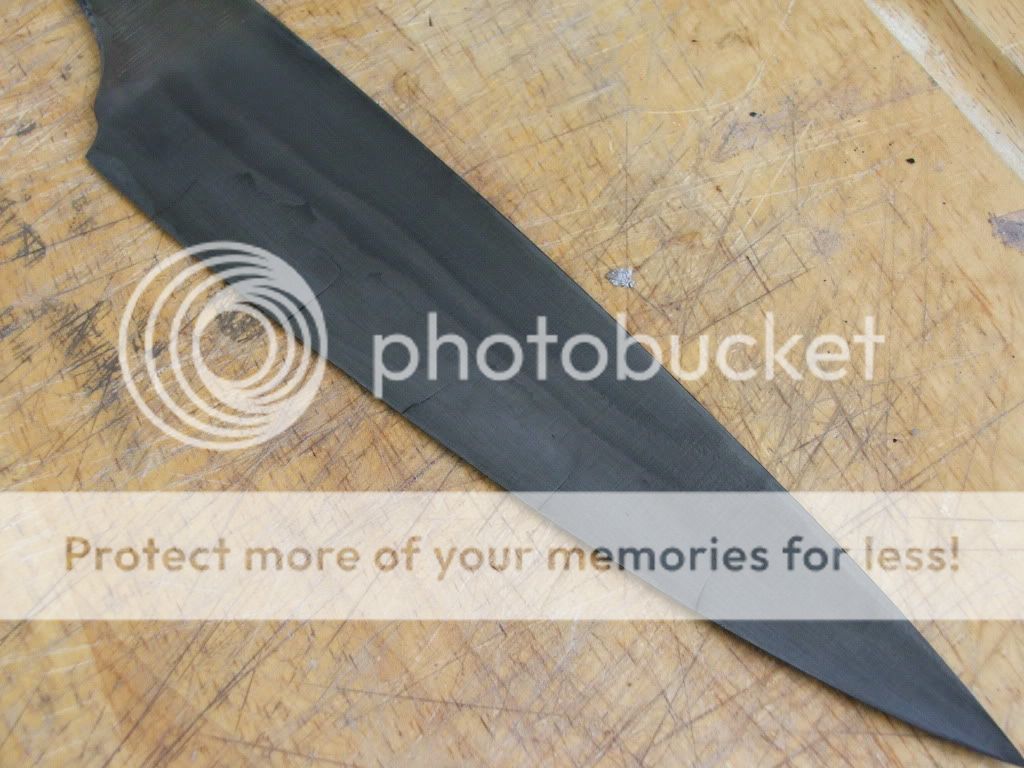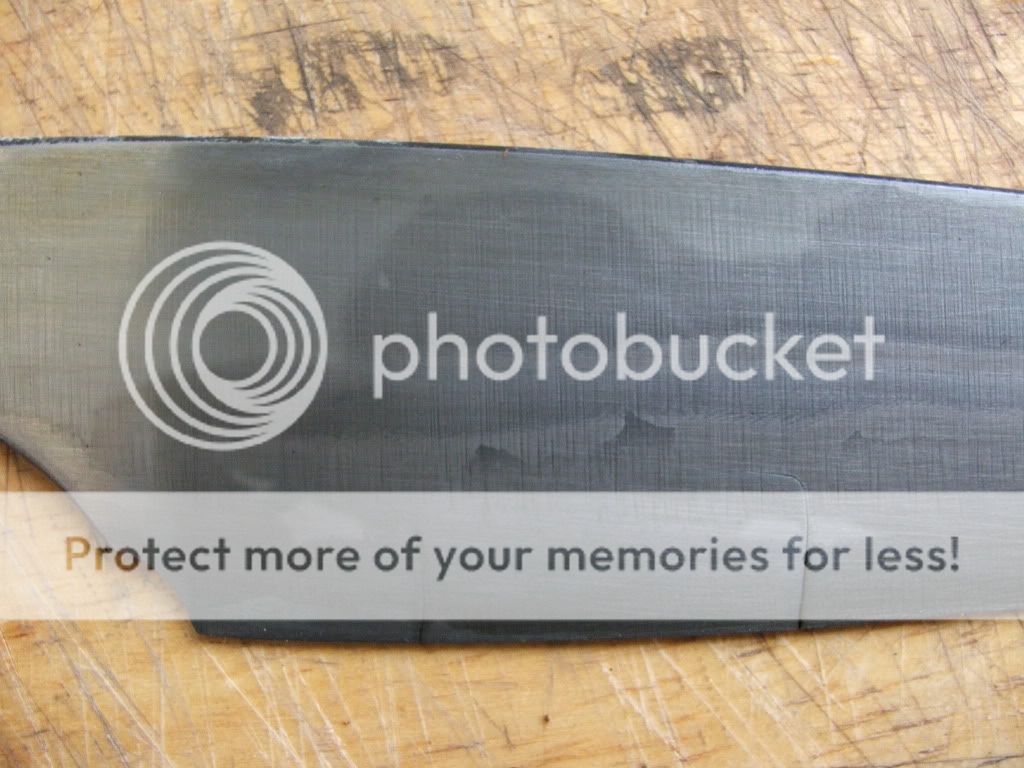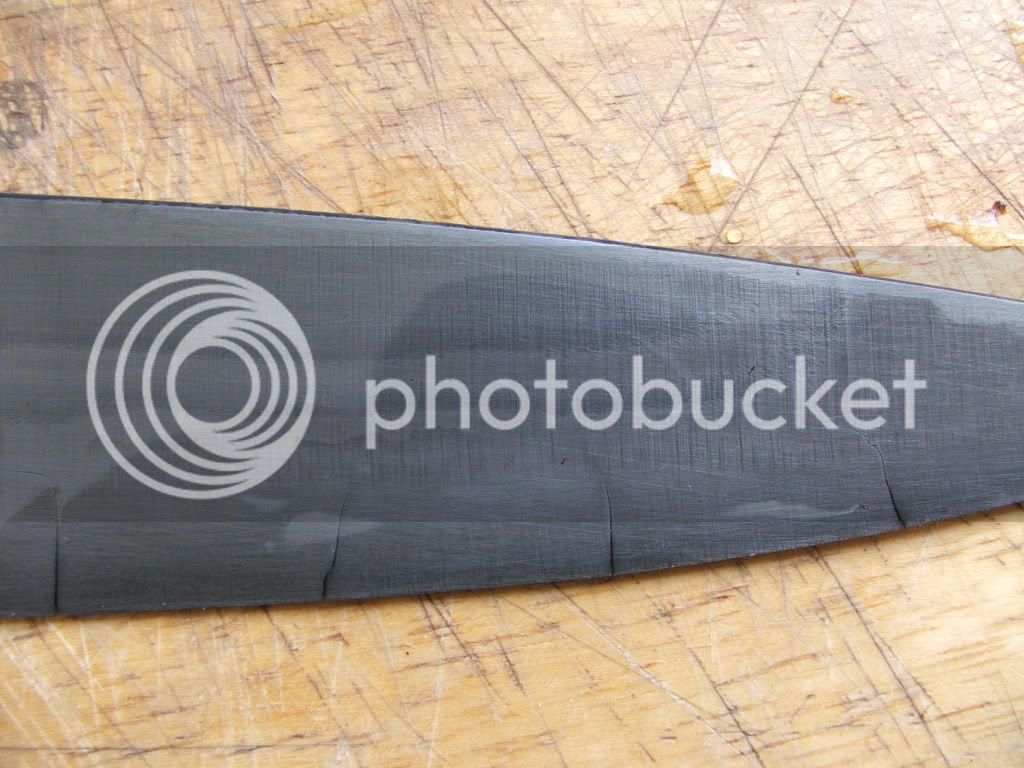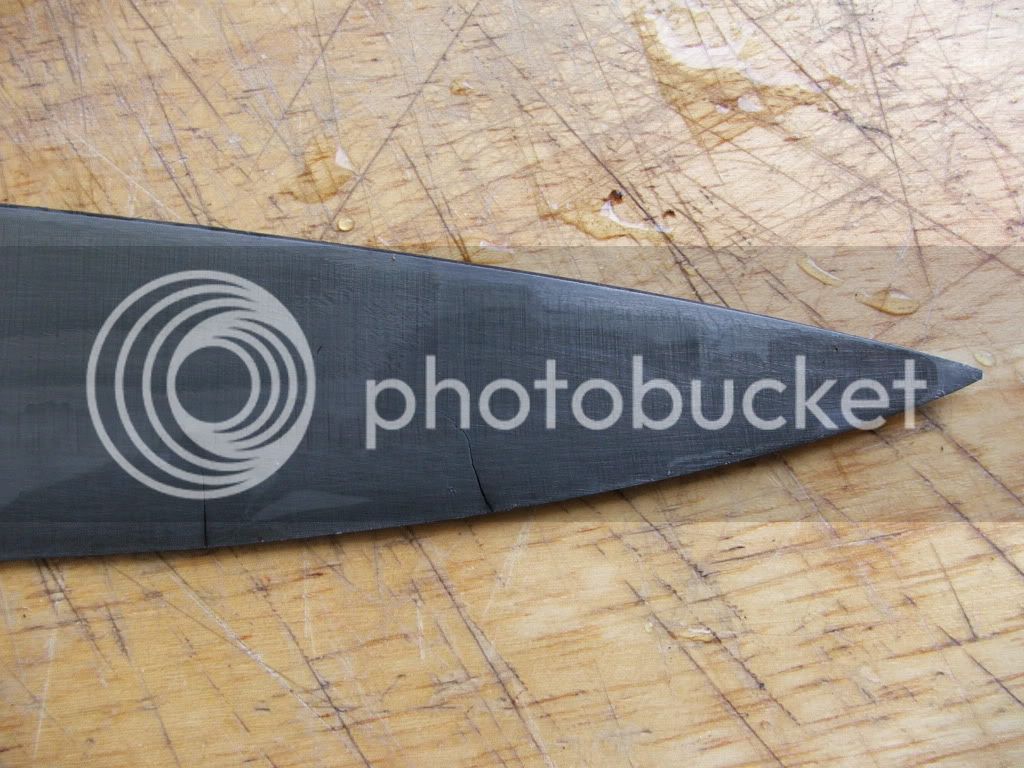So here we are. These pictures are examples of just one pitfall which might befall an inexperienced, impatient, otherwise unprepared, or just plain unlucky smith who attempts to differentially harden a kitchen type knife. Even worse, this steel is 1075, which is incredibly forgiving due to its rather moderate carbon content, and general lack of complex alloying agents.
Overall blade.
The heel. If you look at the crack to the far right, you can see what I meant by the harder...quickly cooling edge steel trying to rip itself away from the softer, more slowly cooling steel of the spine.
More of the edge.
And the tip.
What happened with this blade, is the clay layout allowed extremely rapid cooling in the precise areas where the cracks propagated. Imagine clay lines stretching down and insulating between the cracks, channeling the quenchant towards the steel in those areas. In addition, it was a bit (perhaps 100°-200°F) too hot when going into the salt water, and was held in perhaps a second too long. All three of these are very small errors, which are very easy to make.
This brings up another point. American made honyaki blades, from custom makers, are almost invariably heat treated in a PID controlled oven, allowing thoroughly precise temperature control, and timed soaks at that temperature. When you know what you're doing, this helps tremendously with the success rate, along with ENSURING that each blade reaches the utmost potential of the steel its made from. The few Japanese smiths capable of pulling off honyaki blades (I've read there are only five?), do so without the benefit of temperature control. Everything is by eye (color), and feel (the blade just feels
different...I don't know how else to describe it...). That is how I taught myself to do it initially, and believe me...was I ever grateful to be able to eventually build my oven. I would never, EVER want to go back to doing it that way, and have nothing but respect for those Japanese smiths who continue to do so.
I think when you're purchasing a Japanese honyaki blade, that's a large part of what you're paying for. Not only the properties in the knife itself, but the skill that allows a master of his craft to find success in a task where most other practitioners find only failure.








